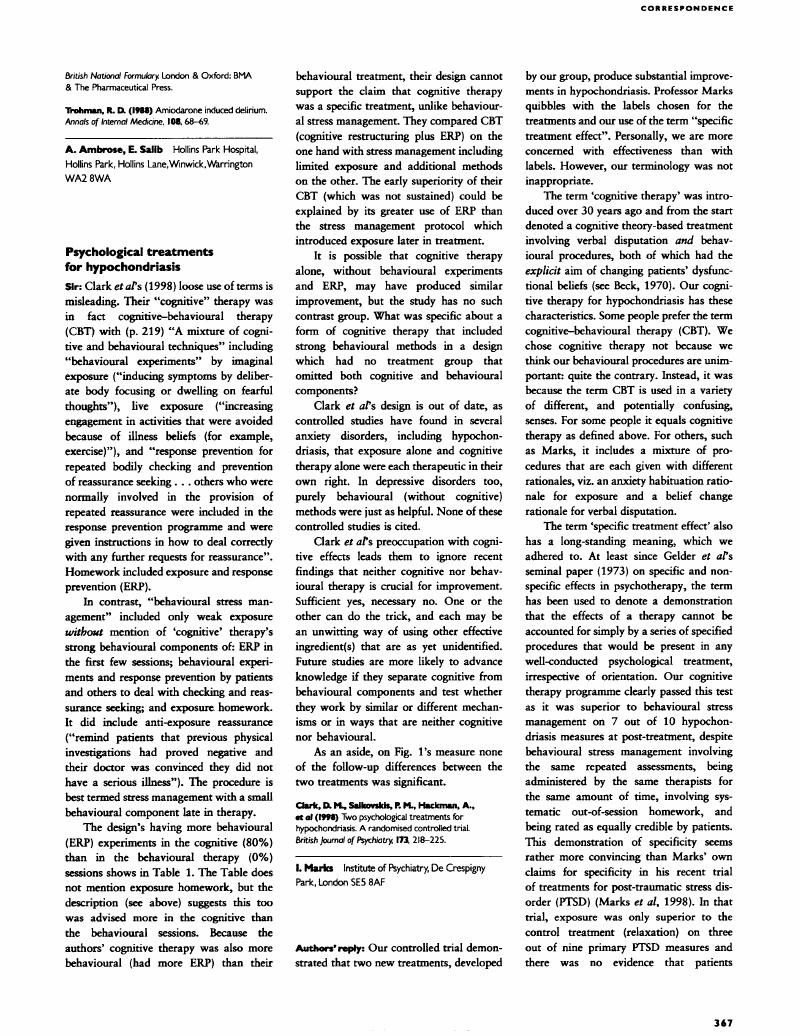No CrossRef data available.
Article contents
Author's reply
Published online by Cambridge University Press: 02 January 2018
Abstract
An abstract is not available for this content so a preview has been provided. Please use the Get access link above for information on how to access this content.

- Type
- Columns
- Information
- Copyright
- Copyright © 1999 The Royal College of Psychiatrists
References
Beck, A. T. (1970) Cognitive therapy: nature and relation to behaviour therapy. Behavior Therapy, 1, 184–200.Google Scholar
Gelder, M. G.
Bancroft, J. H. J., Gath, D. H., et al (1973) Specific and non-specific factors in behaviour therapy. British Journal of Psychiatry, 123, 445–462.CrossRefGoogle ScholarPubMed
Marks, I. M., Lovell, L., Noshirvani, H., et al (1998) Treatment of PTSD by exposure and/or cognitive restructuring. Archives of General Psychiatry, 55, 317–325.CrossRefGoogle ScholarPubMed
Salkovslds, P. M., Clark, D. M., Hackmann, A., et al (1999) An experimental investigation of the role of safety behaviours in the maintenance of panic disorder with agoraphobia. Behaviour Research and Therapy, in press.Google Scholar



eLetters
No eLetters have been published for this article.